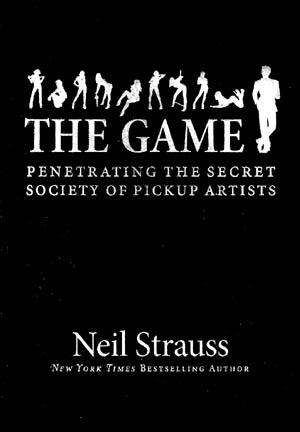By end of ‘The Game,’ you’ll hate the players
Published 12:00 am Sunday, June 4, 2006

- The Game: Penetrating the Secret Society of Pickup Artists, by Neil Strauss. New York: Regan Books (Harper Collins), 2005. 464 pages, $29.95.
Reviewed by Andrew McMichael, Department of History, Western Kentucky University
Ladies, beware. That man approaching you and your friends at your local hangout might not be some ordinary guy, some “AFC.” He might be a peacocked PUA trying to sarge you by negging, false time constraints, and yes-ladders all building up to running a routine called “the cube” in order to f-close you.
Trending
Confused?
Neil Strauss’ The Game explains it all. This is an ostensibly non-fiction book about a group of pickup artists (PUAs) who have honed their ability to pick up women in bars to the point where it has become a science shared among an international community of like-minded geeks. For these men, women are no longer people with personalities – they have become objects to be hit on, or “sarged” as the PUAs call it. Going to a bar and meeting women became a game men played to counter what they saw as a similar game played by women.
At first, the reader might be confused as to the point of this book. Strauss is the author of three New York Times bestsellers and specializes in the biographies of such “notables” as the heavy metal band Mötley Crüe, shock-rocker Marilyn Manson and porn star Jenna Jameson. But one day about three years ago he received a call from a book editor pointing Strauss to a 150-page document containing the “collected wisdom of dozens of pickup artists who had been exchanging their knowledge” on the Internet. A self-described plain-looking nerd who portrays the major regret in his life as not having “fool[ed] around with enough girls,” the document changed Strauss’ life. Within a few months he became deeply involved with this Internet community, determined to “evolve,” as he termed it, until he became the greatest pickup artist in the world. Eventually he and other PUAs founded “Project Hollywood,” a legendary home in Los Angeles where young men from around the world visited, lived, and honed their pickup techniques in clubs on the nearby Sunset Strip. They also conducted “seminars” at up to $1,500 per person, teaching pickup techniques to other men.
“The Game” is Strauss’ account of that journey, the lifestyle that it engendered, and the community of pickup artists who connect with each other worldwide. What an … um … interesting read. It’s hard to know who is more pathetic in this book – Strauss or the community of pickup artists he ambivalently describes. The author clearly takes some pride in his rise in status among the members of the community. Strauss spends a fair amount of the volume discussing the ways in which he, on the advice of other PUAs, reads books on human psychology, theories of mating and evolution, social interaction, and biology in order to help him understand what supposedly motivates women to choose one man over another and therefore be more likely to go sleep with him. The amount of studying that these people do for this is at once amazing and sad. In the process of becoming a PUA Strauss reinvents his personality, becoming a shallow man with very few socially redeeming values outside of his ability to, as he called it, “close the deal.”
The community of PUAs, however, reads like typical pathetic nerds trying to figure out how to approach a pretty girl at a high school dance. After discovering a pickup line that works, a member of this loosely organized group would post the trick on the Internet, giving others a chance to try it and then improve upon it. In the process these pickup artists appear to lose their soul. Indeed, at the end of the book the main actors either go crazy, drift away from the group, or become so inwardly tortured that Strauss can no longer stand them.
It would be one thing if this were simply a work of fiction. In the time since the release of “The Game,” however, several large newspapers have sent reporters out with Strauss to see if the techniques he outlines really work as easily as he claims. Sadly, they do. And herein lies the probably unintended message of the book – we as humans are so bound by biology and social cues that we can fall prey to the shallow manipulations of the opposite sex.
Trending
Strauss himself recognizes that loss of humanity, the objectification of women and men, and the generally pathetic nature of devoting one’s entire life to developing a fake personality that better enabled someone to sleep with strangers. In the end he leaves the community, having found a steady girlfriend. The purpose finally becomes clear – despite the mental breakdown of the other characters and Strauss’ last-chapter redemption, most of the book is a celebration of shallowness, leaving the reader to wonder if there is any point to reading it.






